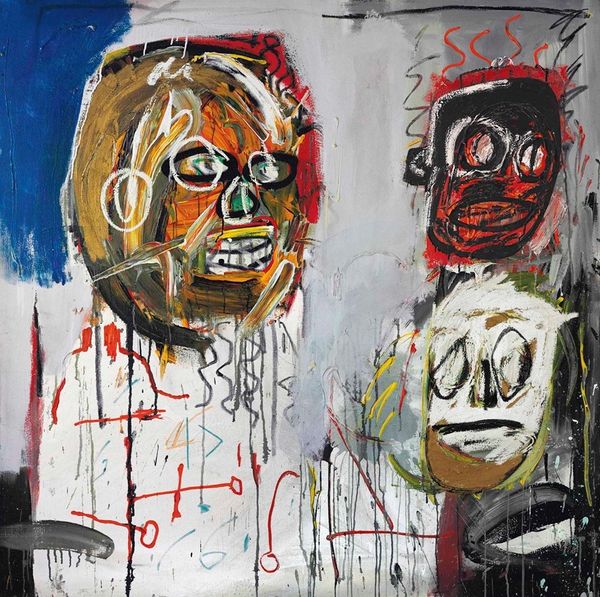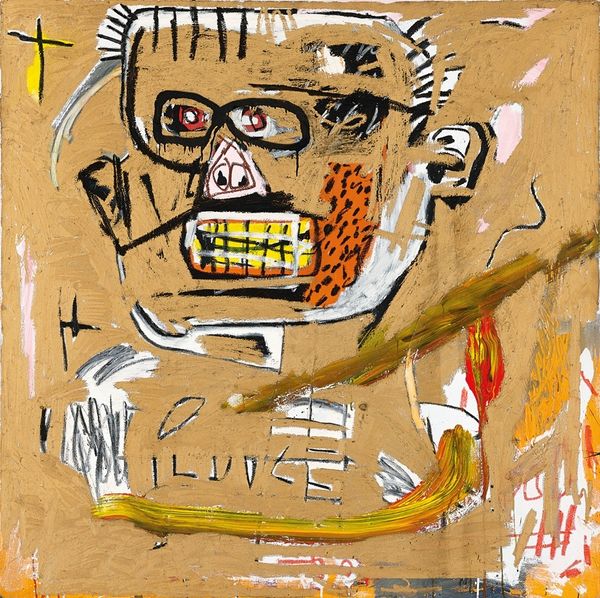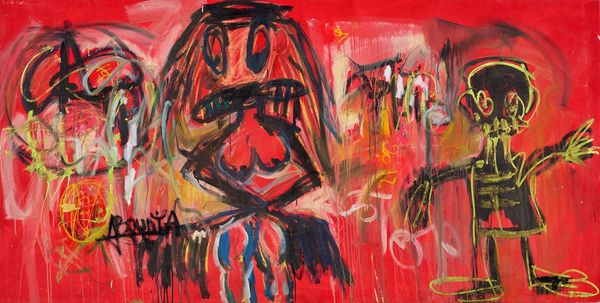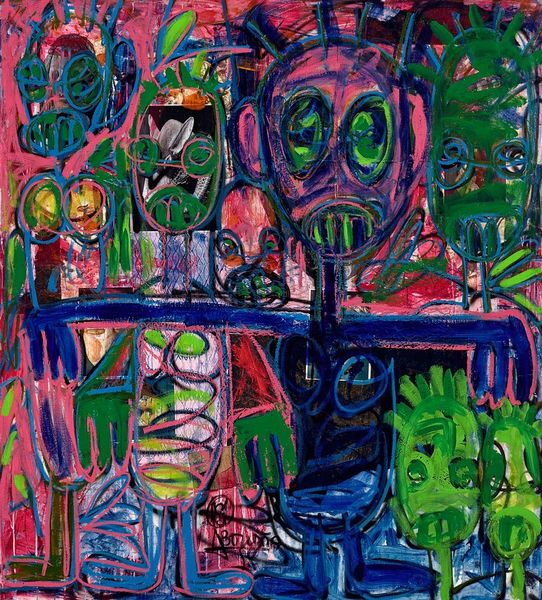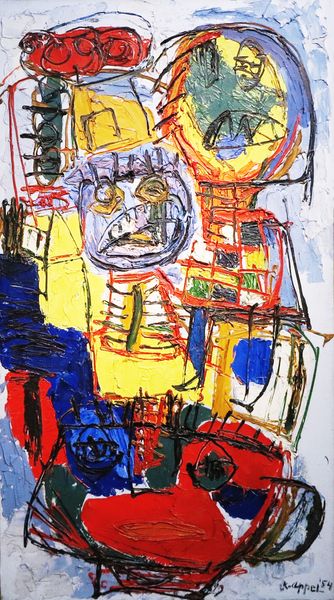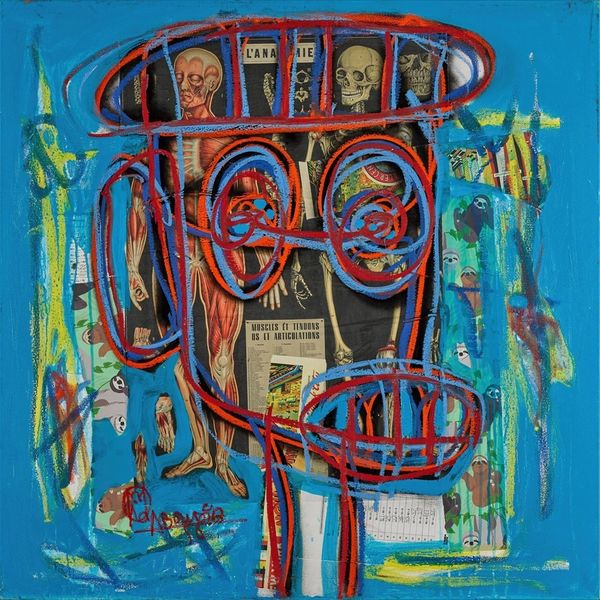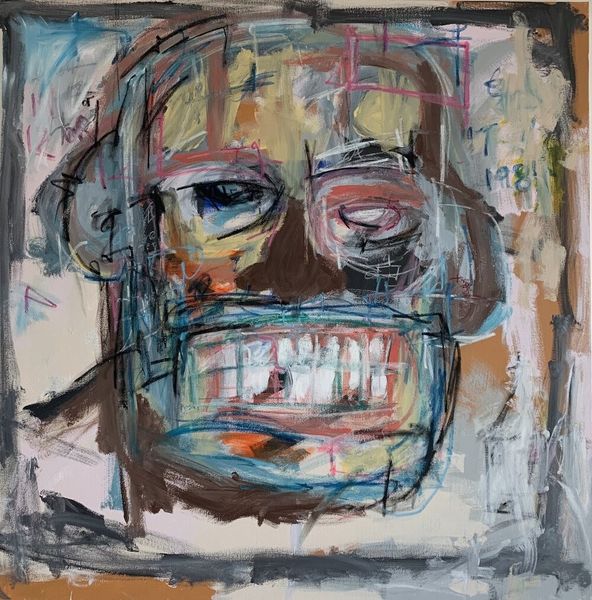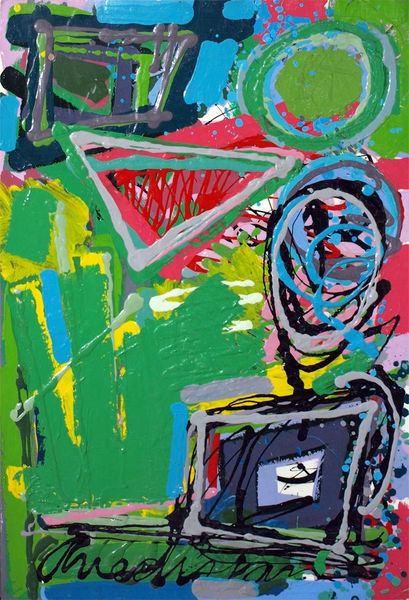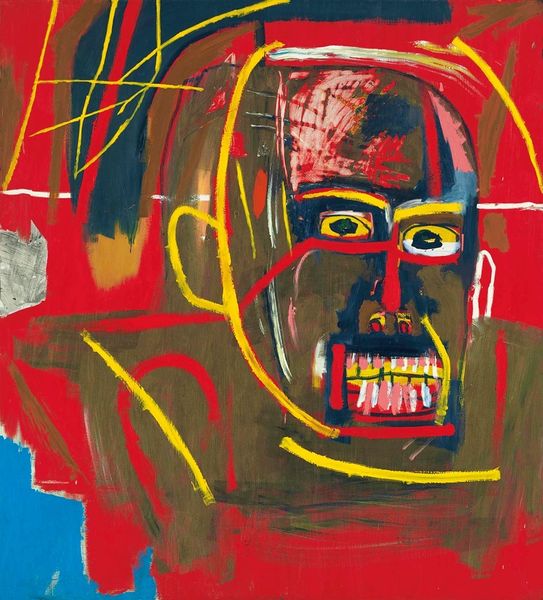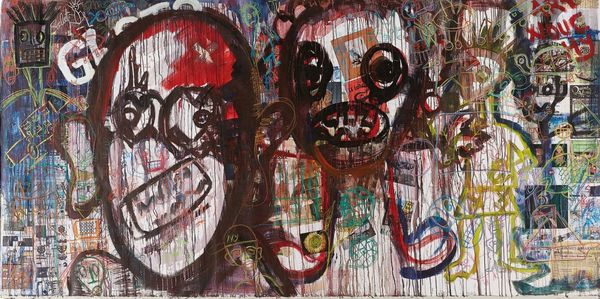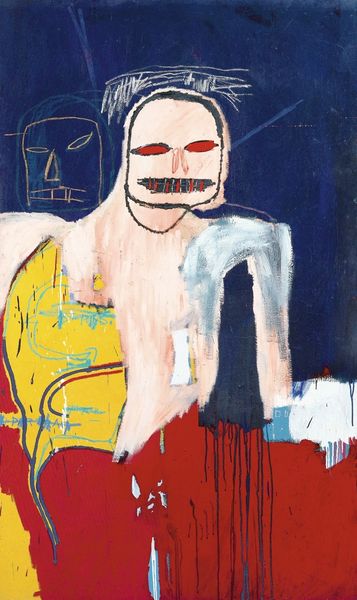
Copyright: Modern Artists: Artvee
Curator: Jean-Michel Basquiat’s “Red Skull,” rendered in acrylic, startles with its primal energy. The date, 1982, places it squarely within his peak period. Editor: It feels immediately visceral, doesn’t it? Almost aggressively so. The chaotic composition and intense reds convey a sense of raw anxiety, of an urgent scream trying to break through. Curator: Skulls, of course, are potent symbols across cultures, embodying mortality, transition, and the ephemeral nature of existence. Consider how Basquiat reclaims this universal imagery through a modern lens, layering it with his signature neo-expressionist style. The marks of struggle and vitality commingle here. Editor: Right, but I also read the "Red Skull" figure in a deeply political way. It is not just an individual grappling with mortality. Look at the historical moment – the 1980s, the rise of Reaganomics, stark racial inequalities. The skull here feels like a visceral representation of systemic oppression, a symbol of the walking dead created by uncaring structures. Curator: An interesting viewpoint. I can agree with the overall symbolic meaning, it could easily symbolize a type of decay inherent to our society and humanity as a whole. Basquiat masterfully blends high and low art references to forge his unique symbolic order; the graffiti elements tie this piece firmly to street culture, which can have revolutionary and freeing connections to a lot of folks. Editor: Absolutely, and I think it is critical to remember Basquiat’s positionality as a Black artist in a predominantly white art world. His choices – the subject matter, the style – are all acts of resistance, of reclaiming space. So this skull screams in defiance. Curator: Yes, it challenges us to remember cultural continuity through symbols. The skull form stretches back millennia, finding resurgence in various resistance movements, but Basquiat uses a visual language that can reach us on different plains of consciousness, sparking connections we may not always grasp fully. Editor: I agree. By juxtaposing that ancient, ever-present symbol of mortality with the frenetic energy of the New York art scene, Basquiat forges a new language, that still resonates loudly with social unrest even today. Curator: It's precisely this synthesis that makes "Red Skull" such a compelling piece; timeless yet timely, deeply personal, but universally resonant. It asks, maybe even demands, that we grapple with life, death, and meaning. Editor: Leaving you little chance of quiet introspection. It grabs your attention in a bold and unavoidable way and compels the audience to deal with questions of injustice and death. A truly amazing piece.
Comments
No comments
Be the first to comment and join the conversation on the ultimate creative platform.
